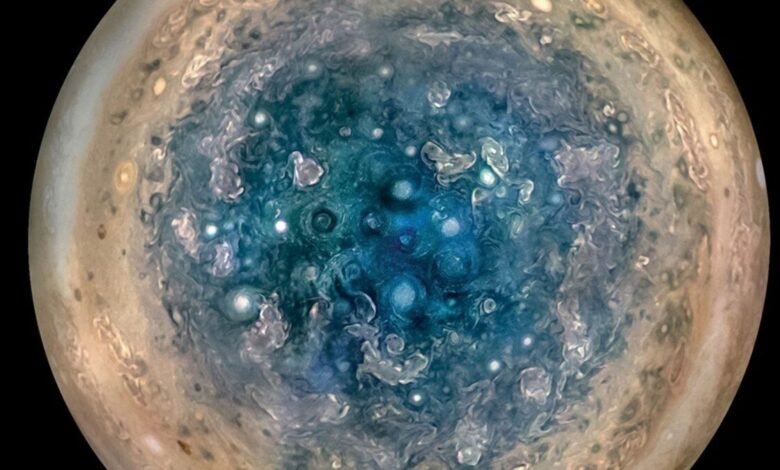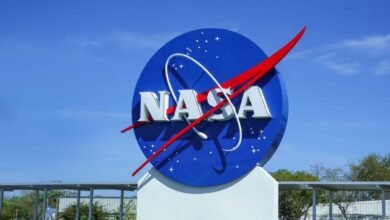Astronomers Detect Entirely New Type of Plasma Wave Above Jupiter’s North Pole

Since coming into the orbit of Jupiter in 2016, NASA spacecraft Juno He was working exhausting Several puzzles unveiled One of many largest planet is our photo voltaic system. His final discovery could also be one of the vital fascinating up to now: a very new sort of plasma wave close to Jupiter.
On a paper printed on Wednesday in Physical review messagesAstronomers describe an uncommon sample of plasma waves within the magnetic cowl on Jupiter – a “magnetic bubble” that protects the planet from outer radiation. Evidently the sturdy magnetic area of Jupiter forces two very several types of plasma to shake aspect by aspect, creating a singular movement of molecules and fees charged of their polar areas.
Plasma is a significant pressure in forming a troubled Jupiter environment. As such, the researchers consider that new notes will improve our understanding not solely of the climate in Jupiter, but additionally the magnetic properties of distant out of doors planets.

For the research, the researchers analyzed the habits of plasma waves within the magnetic cowl on Jupiter, which accommodates a really magnetic plasma. The crew, collaborated between researchers from the College of Minnesota, Iowa College, and the Southern West Analysis Institute, Texas, I discovered an sudden fluctuation between Alfvén waves and Langmuir waves, which replicate the motion of plasma atoms and electrons within the plasma, respectively.
The electrons are a lot lighter than the charged atoms, which signifies that, it often extends two sorts of wave on fully completely different frequencies – which was not clear that the magnetic cowl was not on Jupiter, which led researchers to take a better look. The investigation, which adopted, revealed an unprecedented sort of plasma fluctuation close to the Planet columns.
” New world.
In contrast to the Earth’s Earth, which is attributable to photo voltaic storms, Jupiter Ourora – a barrage of tremendous -super particles which can be Hundreds of times more vibrant From Auroras on Earth – typically seems as a producer of its sturdy magnetic area. Getting a greater understanding of how these phenomena may be helpful info for future missions within the seek for an unique life on exterior planets, in line with the authors of the research.
“Whereas such situations don’t occur [on] Earth, it’s attainable to be utilized within the polar areas of different large planets and maybe within the exterior planets or the magnetic stars strongly, “astronomers wrote within the paper.
“Jupiter is a Rosita stone for our photo voltaic system,” stated Scott Bolton, the principle researcher at Juno in NASA. Introduction page For the spacecraft. “Yuno goes there as our envoy – to clarify what Jupiter says.”
Initially, NASA anticipated Juno to conclude in 2017, after they intentionally direct a spacecraft to Jupiter’s environment, a call that adheres to the necessities of NASA’s planetary planets. Nevertheless, the Juno flight has advanced over time, and NASA concluded that the spacecraft It’s now not a risk to Jupiter’s moons. Consequently, the company licensed the mission equipment.
Nevertheless, scientists consider that by September this 12 months, Juno’s orbit shall be regular, and it is going to be adhered to due to Jupiter’s environment. Nevertheless, this doesn’t in any approach finish in exploring humanity for Jupiter; Europa Clipper It’s scheduled to achieve Europe, Jupiter’s Moon, in 2030 (the final time we achieved, Some tourist attractions did near Mars). After all, even after Juno Planet consumes, scientists will nonetheless have quite a lot of invaluable information from the spacecraft that they are going to proceed to research rigorously for years to come back.
2025-07-20 10:00:00





